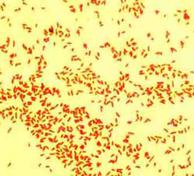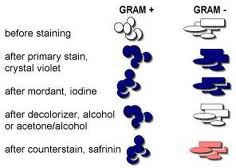 | ||||
Gram-negative Bacterial Cell Wall - P2
SPO VIRTUAL CLASSROOMS
Gram-negative Escherichia coli @ 1000xTM
This differential staining not only colors the bacteria, but the specific stain reaction distinguishes between two meaningful categories of bacteria based on the differences in their cell wall structure.
Page last updated: 11/2015
You have free access to a large collection of materials used in a college-level introductory microbiology course. The Virtual Microbiology Classroom provides a wide range of free educational resources including PowerPoint Lectures, Study Guides, Review Questions and Practice Test Questions.
PAGE 2 < Back to Page 1
End of Article
Gram Negative Bacteria as Pathogens
Many Gram-negative bacteria are pathogens; bacteria that can cause disease. This pathogenicity is typically associated with lipopolysaccharide (LPS) endotoxins in Gram-negative cell walls, and other Gram-negative virulence factors such as the fimbriae, which help bacteria adhere to cells they can infect, and an additional layer called a capsule, which helps them stick and hide from the host' immune system.
Sources & Resources
- Bauman, R. (2014) Microbiology with Diseases by Taxonomy 4th ed.
- Park Talaro, K. (2008) Foundations in Microbiology.
- Gram-positive Cell Wall Structure, "Lab Notes" article from Science Prof Online.
- Gram Stain Procedure: Identification of Gram+ and Gram- Bacteria, "Lab Notes" from SPO.
- Gram Staining & Isolation Streak Plate Laboratory Main Page from the Virtual Microbiology Classroom.
- Differential Staining of Bacteria Laboratory Main Page.
- Gram Stain Bite Sized Tutorial: This is an extremely useful tutorial that shows, step-by-step, the Gram-staining procedure and the appearance of Gram+ and Gram- bacterial cells.
After the Gram stain procedure, Gram+ cells appear purple; their thick layers of peptidoglycan having retained the primary stain, crystal violet. Because Gram negative cells have a very thin layer of peptidoglycan layer, these cells do not retain the purple primary stain. At the end of the Gram staining procedure, Gram-negative cells retain the secondary stain, safanin, and appear pink.
Gram Stain Procedure



